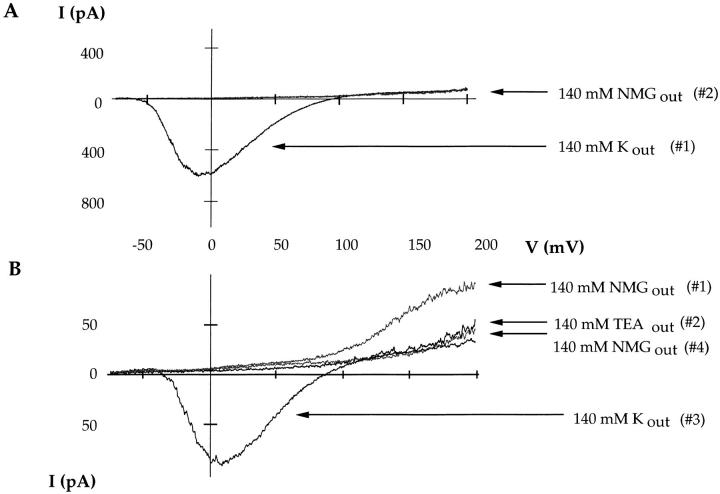Figure 1.
The wild-type Shaker channel conducts sodium poorly in the absence of added potassium. Experiments were done on outside-out patches. Current traces were elicited by 76-ms voltage ramps from −100 to +200 mV. The pipette solution contains 140 mM NaCl, 0 added KCl. (A) In the presence of 140 mM external KCl, a prominent inward current is observed (#1). No additional outward current is observed with 140 mM external NMG (#2). (B) The patch was extensively washed with nominally K-free solution (140 mM NMGCl) and the order of solution changes was reversed. Under these conditions, a ramp protocol elicits an outward current (#1). The current is blocked by 140 mM external TEA (#2). Upon washout, 140 mM KCl is washed back onto the patch to demonstrate the viability of the channels (#3). A subsequent attempt to observe sodium currents with 140 mM NMGCl fails (#4).

